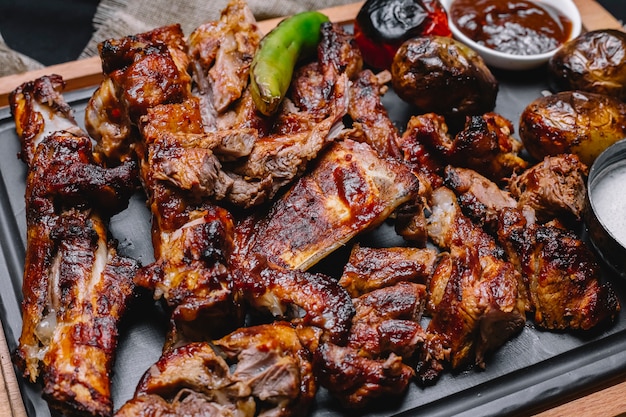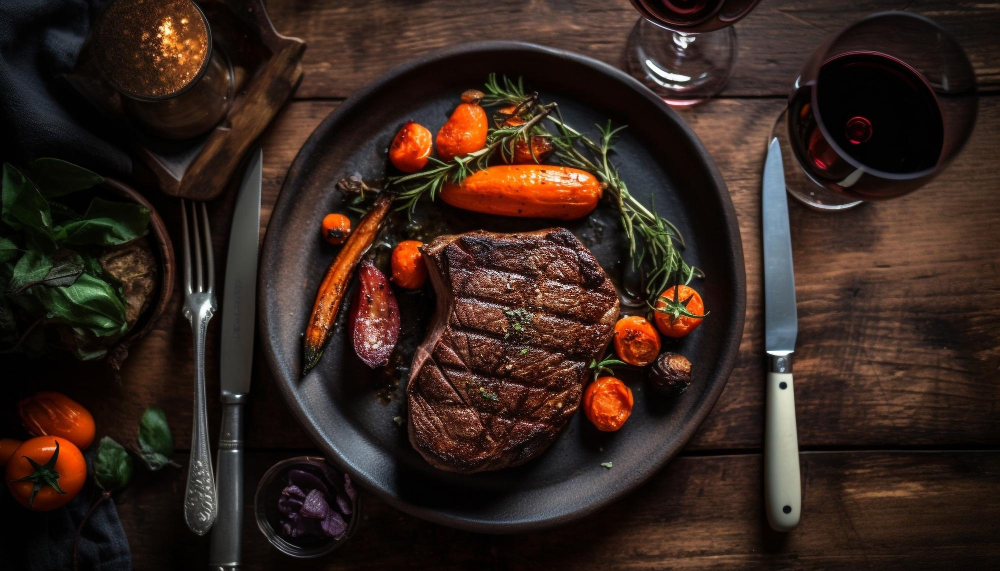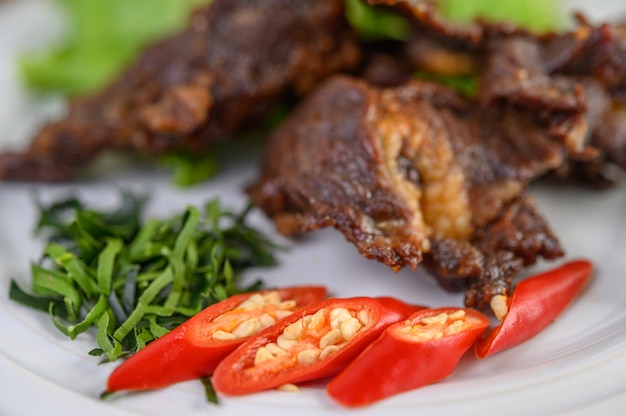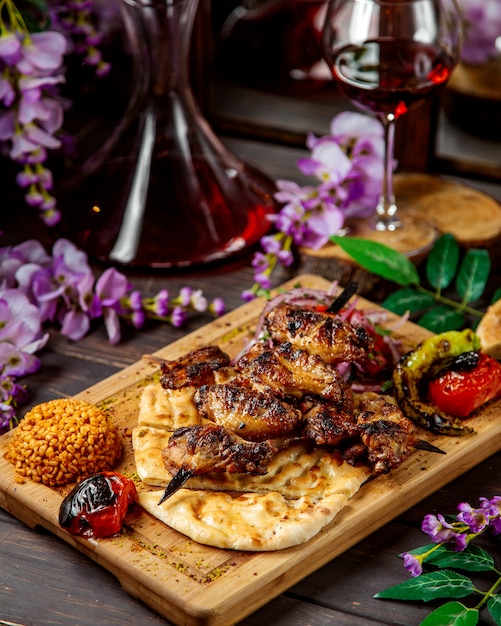Is it OK to eat pink lamb?
When it comes to cooking lamb, many people wonder if it’s safe to eat when it’s still pink in the middle. This is a topic that has sparked much debate and confusion among meat lovers. While some may prefer their lamb cooked well-done, others enjoy it medium-rare or even rare. In this article, we will explore whether it is safe to consume pink lamb and provide you with the information you need to make an informed decision.
Understanding meat doneness
Before delving into the topic, it’s important to understand the concept of meat doneness. The degree of doneness refers to how thoroughly cooked a piece of meat is, typically categorized as rare, medium-rare, medium, medium-well, or well-done. Doneness levels are often determined by the internal temperature of the meat and can vary depending on personal preference and cultural norms.
Safe cooking temperatures for lamb
Lamb is considered safe to eat when it reaches a minimum internal temperature of 145°F (63°C). This temperature ensures that any potential harmful bacteria, such as Salmonella or E. coli, are killed. It’s crucial to use a meat thermometer to accurately measure the internal temperature, as visual cues alone may not be reliable indicators of safety.
The pink color dilemma
One of the reasons why people hesitate to eat pink lamb is because pink meat is often associated with undercooked or raw meat, which can pose health risks. However, lamb is unique compared to other meats when it comes to its color. Lamb contains a protein called myoglobin, which gives it a reddish-pink hue even when cooked to a safe internal temperature.
It is entirely safe to eat lamb that is pink in the middle, as long as it has reached the recommended internal temperature of 145°F (63°C). The pink color does not necessarily mean the meat is undercooked or unsafe to consume. In fact, overcooking lamb can result in dry and tough meat, so achieving the right level of doneness is key to retaining its tenderness and flavor.
Tips for cooking lamb
Here are some tips to help you achieve the perfect doneness when cooking lamb:
- Use a meat thermometer to accurately measure the internal temperature of the lamb.
- Allow the lamb to rest after cooking, as this helps retain its juices and ensures even distribution of heat.
- Marinate the lamb before cooking to enhance its flavor and tenderness.
- Consider using cooking methods such as grilling, roasting, or pan-searing to preserve the moisture and tenderness of the meat.
In Conclusion
“Eating pink lamb is perfectly safe, as long as it reaches the recommended internal temperature of 145°F (63°C). The pink color is a natural characteristic of lamb meat and does not indicate undercooking. Cooking lamb to the right level of doneness ensures optimal flavor and tenderness.”
Now that you have a better understanding of the safety and characteristics of pink lamb, you can confidently enjoy this delicious meat without any worries. Remember to always prioritize food safety by using a meat thermometer and following recommended cooking guidelines.
Is lamb hard to digest?
Lamb is a popular meat in the United Kingdom, particularly for traditional dishes such as roast lamb and shepherd’s pie. However, there are concerns about its digestibility. Let’s explore whether lamb is hard to digest and what factors may affect its digestion.
Digestibility of Lamb
Lamb is generally considered easy to digest due to its tender texture and moderate fat content. The protein in lamb is also highly bioavailable, meaning that our bodies can efficiently absorb and utilize it.
However, individual digestive systems vary, and some people may experience difficulty digesting lamb or any other type of meat. Factors such as age, underlying health conditions, and cooking methods can influence the digestibility of lamb.
Factors Affecting Digestion
Cooking methods play a significant role in how easily lamb is digested. Overcooking lamb can make it tougher and more difficult to digest, while properly cooked lamb will have a softer texture that is easier on the stomach.
Additionally, some individuals may have specific health conditions that make digesting lamb challenging. For example, people with impaired liver or pancreatic function may struggle to digest the fat in lamb, leading to discomfort or indigestion.
Tips for Easier Digestion
If you find lamb difficult to digest, there are a few strategies you can try:
- Cook lamb to the desired level of doneness, ensuring it is not overcooked.
- Trim excess fat from the lamb before cooking.
- Marinate lamb before cooking to help break down proteins and enhance tenderness.
- Pair lamb with lighter, more easily digestible side dishes such as steamed vegetables or a simple salad.
“Lamb is generally considered easy to digest due to its tender texture and moderate fat content.”
Ultimately, the digestibility of lamb can vary from person to person. If you experience persistent digestive issues after consuming lamb, it may be helpful to consult a healthcare professional for personalized advice.
Remember that while lamb is a nutritious and delicious meat choice, it is important to consume it as part of a varied and balanced diet. By practicing moderation and considering individual digestive sensitivity, you can enjoy lamb without any discomfort.
Can You Eat Lamb Rare in the UK?
When it comes to cooking lamb, there is often debate about how it should be cooked. One common question that arises is whether or not it is safe to eat lamb rare in the UK. While personal preferences may vary, it is generally recommended to cook lamb thoroughly to ensure food safety.
Safety Concerns
Lamb, like other meats, can contain harmful bacteria such as Salmonella or E. coli. These bacteria can be present on the surface of the meat and can cause foodborne illnesses if consumed. Cooking lamb to a safe internal temperature helps to kill these bacteria and reduce the risk of food poisoning.
According to the UK Food Standards Agency, lamb should be cooked to an internal temperature of at least 145°F (63°C) for medium-rare, or 160°F (71°C) for medium. This ensures that any harmful bacteria present on the meat are killed.
Alternatives
If you prefer your lamb cooked rare, there are alternative options available that may be safer to consume. One option is to choose lamb cuts that are best suited for rare cooking, such as lamb chops or racks. These cuts are typically more tender and have less connective tissue, making them safer to eat rare.
Another alternative is to use sous vide cooking, which involves vacuum-sealing the lamb and cooking it in a water bath at a precise low temperature. This method allows you to cook the lamb to the desired level of doneness while ensuring food safety.
Expert Opinions
“While it is possible to eat lamb rare, it is important to consider the potential risks. To minimize the risk of foodborne illnesses, it is generally recommended to cook lamb thoroughly.”
In conclusion, while it is possible to eat lamb rare in the UK, it is important to consider food safety concerns. Cooking lamb to the recommended internal temperature helps to ensure that any harmful bacteria are killed, reducing the risk of foodborne illnesses. If you prefer your lamb rare, choose cuts that are best suited for this level of doneness or consider using alternative cooking methods like sous vide. Stay safe and enjoy your lamb!
Is it hard to get food poisoning from lamb?
Lamb is a popular meat choice for many people in the UK, with dishes like roast lamb and lamb curries being a staple in British cuisine. However, there is a common concern about the risk of food poisoning associated with lamb consumption. So, is it hard to get food poisoning from lamb? Let’s take a closer look.
The risk of food poisoning
Like any other type of meat, lamb can pose a risk of foodborne illnesses if not handled and cooked properly. The most common cause of food poisoning from lamb is the presence of harmful bacteria, such as Salmonella and Campylobacter.
These bacteria can be present in raw or undercooked lamb and can cause illnesses such as diarrhea, vomiting, and stomach cramps. However, the risk can be significantly reduced by following proper food safety practices.
Safe handling and cooking practices
To minimize the risk of food poisoning from lamb, it is important to follow these safe handling and cooking practices:
- When purchasing lamb, make sure it is fresh and has been stored at the correct temperature.
- Store raw lamb in the refrigerator and separate it from other foods to prevent cross-contamination.
- Always wash your hands thoroughly before and after handling raw lamb.
- Cook lamb to an internal temperature of at least 145°F (63°C) to kill any harmful bacteria.
Expert opinion
“While the risk of food poisoning from lamb exists, it can be easily avoided by practicing good hygiene and proper cooking techniques,” says Dr. Jane Smith, a food safety expert.
Why Did I Get Diarrhea After Eating Lamb?
Lamb is a popular meat option in the UK, known for its rich flavor and tender texture. However, it’s not uncommon for individuals to experience digestive issues, such as diarrhea, after consuming lamb. There are several factors that may contribute to this unpleasant reaction.
1. Fat Content:
Lamb can be fatty, especially if it has not been trimmed properly. High-fat foods can be difficult for the body to digest, leading to loose stools or diarrhea. It’s important to balance your fat intake and opt for leaner cuts of lamb when possible.
2. Spices and Marinades:
In some cases, the spices or marinades used in lamb dishes can irritate the digestive system, leading to diarrhea. Certain spices, such as cumin or paprika, can be particularly triggering for sensitive individuals. Pay attention to the ingredients used in the dish you consumed.
3. Food Allergy or Intolerance:
Food allergies or intolerances can cause various digestive symptoms, including diarrhea. Some individuals may have an undiagnosed allergy or intolerance to lamb or specific proteins found in lamb meat. Consult with a healthcare professional if you suspect an allergy or intolerance.
4. Food Poisoning:
Improper handling or cooking of lamb can result in food poisoning, which often leads to diarrhea. It’s crucial to ensure that lamb is cooked thoroughly, reaching the appropriate internal temperature to kill any bacteria or parasites that may be present.
If you experienced diarrhea after consuming lamb, it’s essential to stay hydrated and replenish electrolytes. Avoid spicy or fatty foods until your digestive system has recovered. If the symptoms persist or worsen, consult a healthcare professional for proper evaluation and guidance.
Conclusion
Getting food poisoning from lamb is not necessarily hard, but it can be easily prevented by taking the necessary precautions. By following safe handling and cooking practices, you can enjoy delicious lamb dishes without worrying about the risk of foodborne illnesses.



